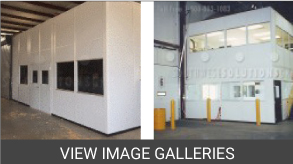Cleanroom Modular Buildings
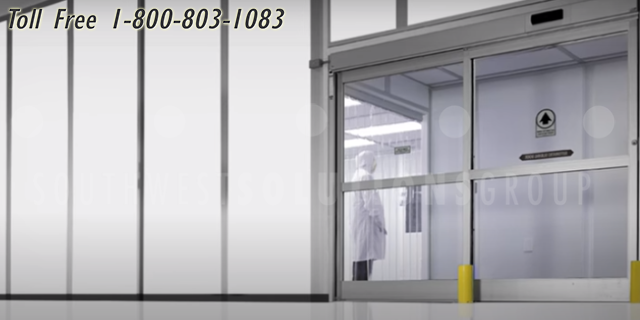
When planning for a cleanroom as part of a facility’s building design or floorplan, they must decide if it’s best to have a modular or traditional construction design. Modular cleanrooms are ideal for aerospace, automotive, biotechnology, food-processing, medical, and pharmaceutical industries.
Modular cleanrooms must meet several compliance regulations, including ISO 14644-1:2015 standards. These standards are part of the US Federal Standard 209E for airborne and particulate cleanliness in a cleanroom. More and more laboratories and facilities turn to modular cleanroom designs to help solve regulatory issues, increase operational efficiencies, and experience faster construction and installation.
Understanding Cleanroom Modular Buildings
Modular design involves an approach that takes a system and breaks it into smaller units that are self-contained. These units typically include individual construction and then, later on, combine to feature an entire system. Regarding building designs, a modular design incorporates components that have factor manufacturing. Then, site crews assemble these components according to the desired configuration.
Modular cleanrooms feature off-site pre-fabrication. When it’s time to bring the cleanroom on-site, crews assemble the manufactured components according to the facility’s specifications. Companies have a choice between choosing a free-standing structure or incorporating it into their facility’s existing structures and walls.
These structures can also incorporate a facility’s existing equipment or HVAC systems. Modular cleanrooms feature rigid walls that are similar to traditional stick-built construction. There’s also the option of choosing soft walls similar to a tent that offers excellent flexibility and transport ease. Modular buildings for cleanroom features designs for the following examples:
- Chemical labs
- Clinical and medical labs
- Forensic labs
- Research labs
- University and other educational facility labs
Why Facilities Should Use Modular Cleanrooms
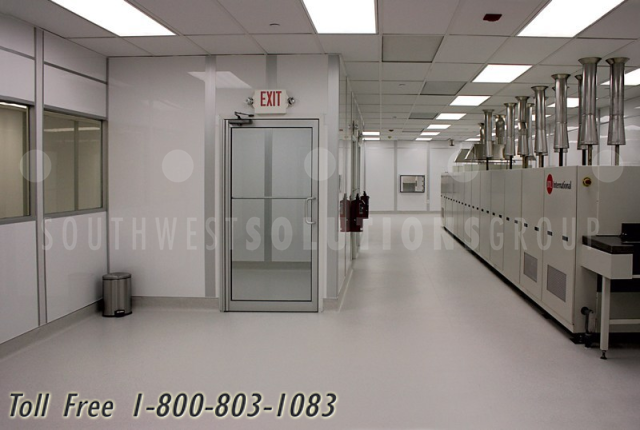
Adaptability and Flexibility
Many facilities feature design and construction that focuses on maximum adaptability. Including modular designs into the fray accommodates a facility’s need for flexibility. This type of construction includes demountable walls that allow facilities to remove individual wall panels. In doing so, they don’t disturb adjacent ceiling, flooring, or other wall panels. Adaptability and flexibility also include facilities being able to deconstruct modular cleanrooms and relocate them.
Construction Timeframe Reductions
Many facilities face time crunches that mean construction must occur quickly. The flexibility of modular cleanrooms means they have quick and straightforward installation processes. Because a cleanroom wall features non-particulate and non-shedding materials, erecting them doesn’t involve much dust. This type of construction also requires little to no modifications before installation, making construction timeframes reduce further.
Cost-Effectiveness
Choosing a modular cleanroom design means facilities spend less over the unit’s lifetime compared to traditional construction. One of the main reasons is that modular cleanroom modifications are inexpensive and non-disruptive to other facility operations. Facilities also save money because they can reuse existing walls, eliminating labor, new materials, and renovation costs.
Meeting Compliance Requirements
Modular cleanrooms offer many advantages when facilities must meet compliance and regulatory standards and requirements. The entire manufacturing process involves factory-controlled procedures that produce consistent, high-quality products with no variations. These processes ensure that what facilities install in one location performs the same way in future installations.
How Modular Cleanrooms Improve Efficiency and Performance
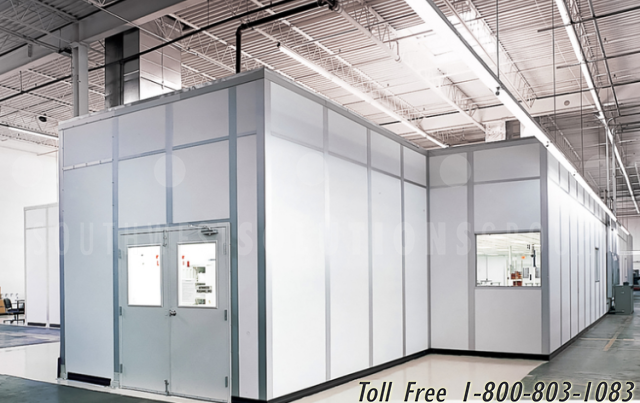
Modular cleanrooms provide laboratories with a controlled environment that helps them remain compliant and work safely. Laboratory technicians working in a clean environment allows them to maintain control over the process, lower failure rates if contamination occurs, and improve productivity.
Many modular cleanrooms include insulated wall systems that offer a thermal barrier. That barrier helps improve the cleanroom’s mechanical system efficiency and performance. In doing so, the facility experiences a reduction in energy costs while simultaneously maintaining temperature levels. This performance exceeds that of non-insulated systems.
Benefits and Features of Modular Buildings for Cleanroom
Modular cleanrooms are increasing in popularity in laboratories across the globe. Because a cleanroom is quick and easy to install, they’re suitable for various applications, including medical and pharmaceutical. Beyond its installation and non-shedding materials, there are several other benefits of incorporating modular buildings for cleanroom designs.
Additional benefits include:
- Easy maintenance: Addressing damage to cleanroom walls involves replacing single panels instead of completing construction renovations. Not only is maintenance or repairs quicker, but it also involves less or no contract labor.
- Effective performance: No matter what technicians are working on in the cleanroom, they can depend on it performing just as well as a stick-built structure.
- Green design opportunities: Facilities can incorporate green designs into their modular cleanroom designs. For example, the cleanroom’s construction could feature recycled materials.
- Low energy costs: Because modular cleanrooms typically require less outdoor air to control humidity and temperature, using this construction costs less to run.
- Quick installation: Erecting the walls for modular cleanrooms take hours or days to complete, instead of weeks or months with conventional construction.
- Cost and time-saving effectiveness: These systems feature off-site manufacturing for a fraction of conventional construction costs, and installation occurs in less time.
- Easy reconfigurations: As the user’s needs change, a cleanroom layout can expand, rearrange, retrofit, or upgrade to meet those needs.
- Versatility: It typically only takes a few days or less to assemble, disassemble, or relocate a modular cleanroom.
Modular cleanrooms feature components and designs explicitly tailored to meet the facility’s needs. Laboratories can choose from small structures to re-designing an entire facility’s interior into a cleanroom. Cleanrooms feature particle filtration in controlled environments where regulations are in place for air pressure, humidity, and temperature.
Additional features include:
- Air showers, airlocks, gowning rooms, and pass-through chambers
- Central vacuum systems
- Dehumidifiers, filtrations, and humidifiers
- Panels to control the environment
- Smoke detectors and sprinkler systems
Technical Specifications and Design
As the demand for laboratory technicians to perform more work increases, so is the need for better material-handling systems. It isn’t uncommon for facilities to turn to an in-house engineering team for these solutions. Architects and designers provide innovative modular cleanroom solutions to educational, legal, medical, military industries, and more.
Modular cleanrooms can be designed with a wide variety of custom features, such as:
- Air curtains
- Adjustable door louvers
- Filtered air-return louvers
- Hidden in-wall air cases
Architectural and Design Phases
When laboratories have expert engineers on staff, it’s possible to integrate modular cleanrooms into existing structures. Implementing a modular cleanroom into an existing structure involves several architectural and design phases:
- Evaluate the facility’s layout for material and personnel flow
- Determine the classification for space cleanliness
- Determine the space’s pressurization
- Determine the space’s supply airflow, filtration, and balance
- Assess any unforeseen variables
- Determine the facility’s mechanical system layout and space
Cleanroom Modular Buildings Increase Efficiencies
Southwest Solutions Group® provides innovative solutions to laboratories, hospitals, and other facilities in need of modular cleanrooms. Call us at 1-800-803-1083 or send us a message so we can help you determine which cleanroom solution is optimal for your facility.

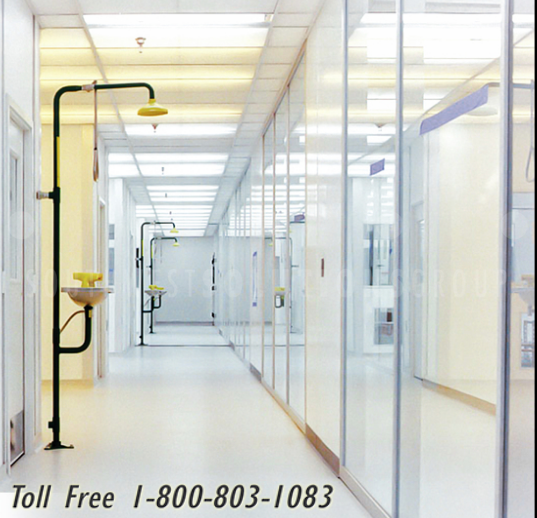
 In Plant Modular Office Brochures
In Plant Modular Office Brochures